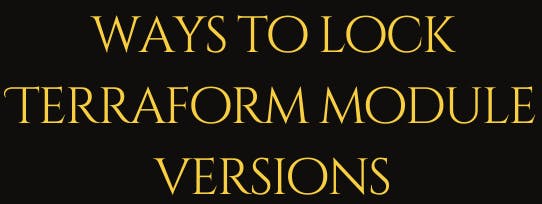Task 1:

What are modules in Terraform and why do we need modules in Terraform?
Modules in Terraform are reusable, self-contained units of infrastructure configuration that can be used to define and manage multiple resources. They allow you to encapsulate and organize your Terraform code into logical components, promoting code reusability, maintainability, and scalability.
Here are some key points:
Modules enable code reusability by encapsulating related resources and configurations.
They promote modularity and maintainability by abstracting complex configurations into reusable components.
Modules enhance collaboration by enabling teams to share and consume standardized infrastructure components.
They improve code organization and readability by providing a clear separation of concerns.
Modules enable versioning and reuse across different projects, ensuring consistent and reliable infrastructure deployments.
What are the benefits of using modules in Terraform?
Reusability: Modules allow you to write infrastructure code once and reuse it across multiple projects or environments.
Modularity: Modules promote code organization and separation of concerns, making it easier to manage and maintain infrastructure configurations.
Encapsulation: Modules encapsulate related resources and configurations, providing a clear and self-contained unit of infrastructure code.
Collaboration: Modules enable teams to share and collaborate on standardized infrastructure components, fostering consistency and efficiency.
Versioning: Modules support versioning, allowing you to manage and track changes to infrastructure configurations over time.
Task 2:

Create/Define a module in Terraform to encapsulate reusable infrastructure configuration in a modular and scalable manner.
Here's an example of how you can define a module in Terraform to encapsulate reusable infrastructure configuration:
# main.tf variable "instance_count" { description = "Number of instances to create." type = number default = 1 } variable "instance_type" { description = "Type of instance to create." type = string default = "t2.micro" } module "ec2_instances" { source = "./modules/ec2" count = var.instance_count instance_type = var.instance_type }In the example above, we define a module named "ec2_instances" by specifying its source directory as "./modules/ec2". This module encapsulates the configuration for creating EC2 instances.
The module takes two input variables: "instance_count" and "instance_type", which can be customized when using the module.
To define the actual implementation of the module, you would create a separate directory called "modules/ec2" with its own Terraform configuration files, specifying the resources and configurations for EC2 instances.
By defining modules in this way, you can reuse and scale your infrastructure configurations in a modular and organized manner.
Task 3:

Dig into modular composition and module versioning.
Modular Composition:
Modular composition in Terraform means combining reusable building blocks called modules to create infrastructure setups. It promotes code reuse, and separation of concerns, and makes infrastructure management easier.
# main.tf module "vpc" { source = "./modules/vpc" } module "ec2" { source = "./modules/ec2" vpc_id = module.vpc.vpc_id }in this example, we are using two modules, "vpc" and "ec2," by specifying their respective source directories. The "ec2" module depends on the "vpc" module, and we pass the "vpc_id" from the "vpc" module to the "ec2" module.
Module Versioning:
Module versioning in Terraform is the practice of assigning version numbers to modules. It ensures consistency and control over module updates, allowing you to manage dependencies, track changes, and ensure reproducibility in your infrastructure configurations.
# main.tf module "vpc" { source = "terraform-aws-modules/vpc/aws" version = "2.0.0" } module "ec2" { source = "terraform-aws-modules/ec2-instance/aws" version = "3.0.0" }In this example, we specify the version of the modules using the "version" attribute. Here, we are using version 2.0.0 of the "vpc" module and version 3.0.0 of the "ec2-instance" module. By specifying specific versions, we ensure consistency and control over the modules used in our infrastructure configurations.
These code snippets demonstrate how to leverage modular composition and module versioning in Terraform to create reusable and version-controlled infrastructure configurations.
Task 4:

What are the ways to lock Terraform module versions? Explain with code snippets.
There are several ways to lock Terraform module versions to ensure consistent and controlled module usage. Here are three common methods with code snippets:
Using a Fixed Version:
# main.tf module "example" { source = "organization/module" version = "1.2.3" }In this example, the module is locked to a specific version (1.2.3). Terraform will always use this exact version, providing consistency across deployments.
Using a Version Constraint:
# main.tf module "example" { source = "organization/module" version = "~> 2.0" }Here, the module is locked to a version range using a constraint. The
~>operator signifies that any version in the 2.x range (2.0, 2.1, 2.2, etc.) can be used. Terraform will automatically select the latest available version within the defined range.Using a Version Constraint with a Pin:
# main.tf module "example" { source = "organization/module" version = "= 3.1.0" }In this example, the module is locked to an exact version (3.1.0) using the
=operator. Terraform will use only this specific version and will not update to any other version, ensuring precise version control.By using these methods, you can effectively lock Terraform module versions and maintain consistent and predictable infrastructure deployments.
Thank you so much for reading.
Follow me on LinkedIn to see interesting posts like this : )

